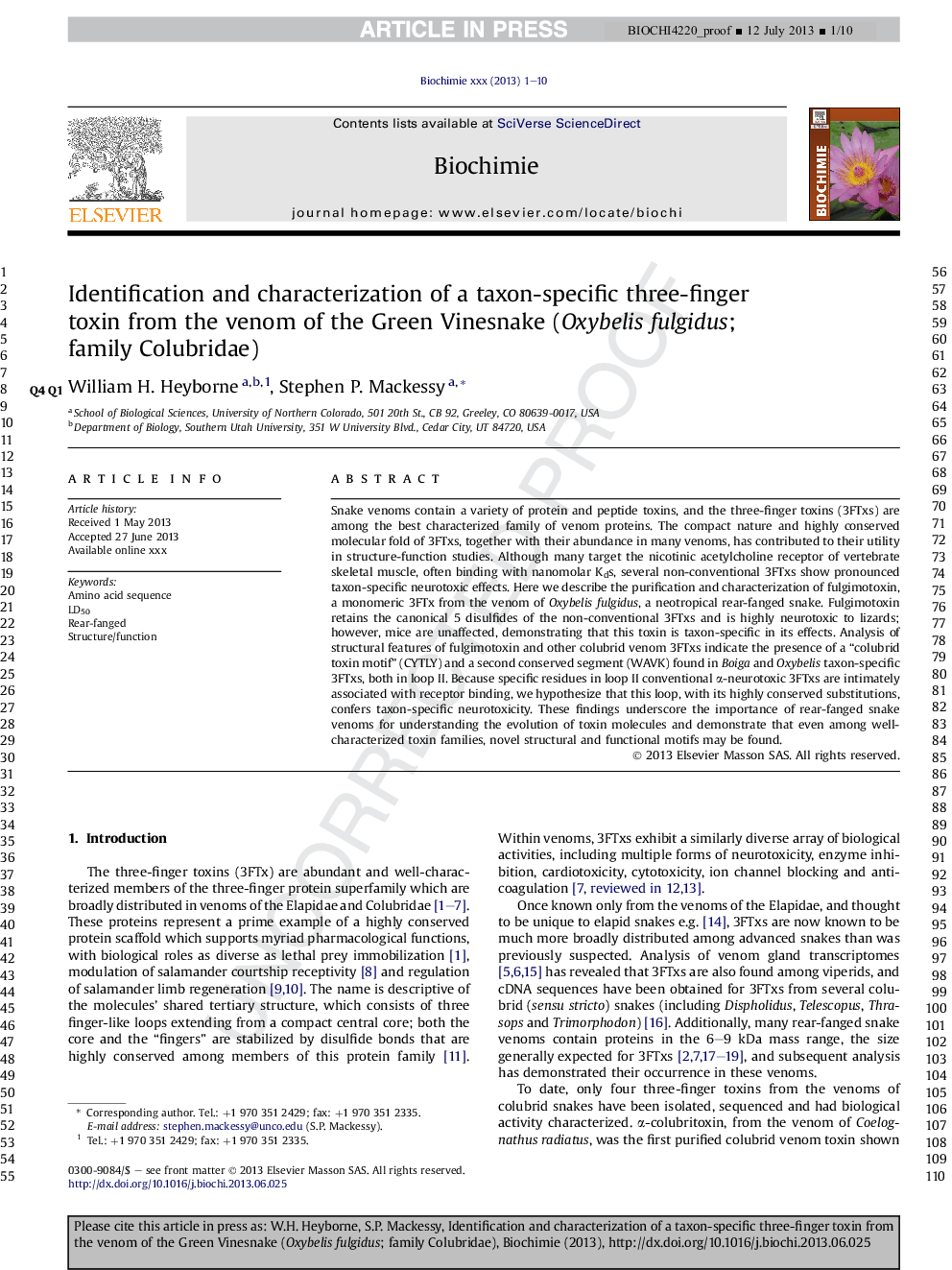| Article ID | Journal | Published Year | Pages | File Type |
|---|---|---|---|---|
| 10803785 | Biochimie | 2013 | 10 Pages |
Abstract
Snake venoms contain a variety of protein and peptide toxins, and the three-finger toxins (3FTxs) are among the best characterized family of venom proteins. The compact nature and highly conserved molecular fold of 3FTxs, together with their abundance in many venoms, has contributed to their utility in structure-function studies. Although many target the nicotinic acetylcholine receptor of vertebrate skeletal muscle, often binding with nanomolar Kds, several non-conventional 3FTxs show pronounced taxon-specific neurotoxic effects. Here we describe the purification and characterization of fulgimotoxin, a monomeric 3FTx from the venom of Oxybelis fulgidus, a neotropical rear-fanged snake. Fulgimotoxin retains the canonical 5 disulfides of the non-conventional 3FTxs and is highly neurotoxic to lizards; however, mice are unaffected, demonstrating that this toxin is taxon-specific in its effects. Analysis of structural features of fulgimotoxin and other colubrid venom 3FTxs indicate the presence of a “colubrid toxin motif” (CYTLY) and a second conserved segment (WAVK) found in Boiga and Oxybelis taxon-specific 3FTxs, both in loop II. Because specific residues in loop II conventional α-neurotoxic 3FTxs are intimately associated with receptor binding, we hypothesize that this loop, with its highly conserved substitutions, confers taxon-specific neurotoxicity. These findings underscore the importance of rear-fanged snake venoms for understanding the evolution of toxin molecules and demonstrate that even among well-characterized toxin families, novel structural and functional motifs may be found.
Related Topics
Life Sciences
Biochemistry, Genetics and Molecular Biology
Biochemistry
Authors
William H. Heyborne, Stephen P. Mackessy,
